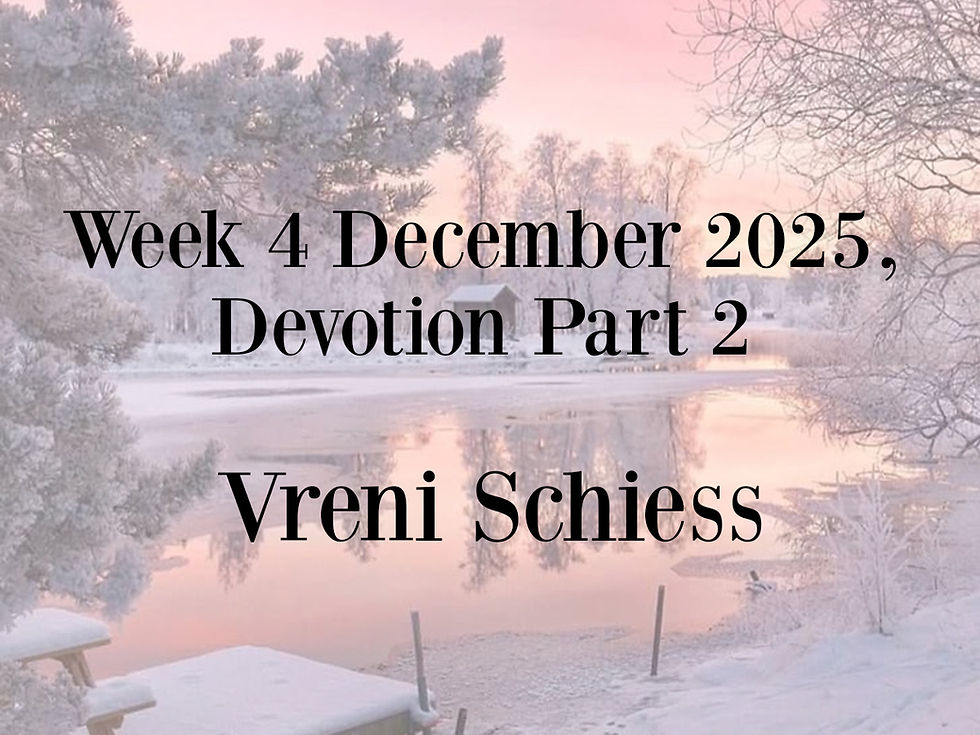Week 1 April 2024, Devotion Part 1
- fpcgh

- Apr 1, 2024
- 3 min read
Say to Hezekiah, “Thus says the great king, the great king of Assyria: On what do you rest this confidence of yours?” Isaiah 36:4
It takes a swashbuckling Sennacherib to peel back the protective layers of our psyche and expose the true stuff of our innermost being. Give glory to God if Christian Swashbuckler steps forth and rises to the occasion. Cry horror of horrors if Joe C. Churchgoer (C, as in chicken) is found cowering in there.
Joe C. Churchgoer (make it Jane, if you like) dislikes bloodthirsty Assyrians. They make for messy Old Testament stories. Sennacherib’s chief emissary to beleaguered Hezekiah, King of Judah, crudely threatens that the Jews will soon “eat their own dung and drink their own urine.” Joe C. Churchgoer would rather have violence on television than bathroom talk in the Bible. He wants his God sanitized and his cup running over with ceremonial liquids, not bodily fluids. (Part 1 of 2)
Comment: Errol Flynn (1909-1959) was the most celebrated swashbuckler in films during Hollywood’s Golden Age. Privately, he flaunted his hedonistic lifestyle and boasted of how easy it was to be immoral. Had he been with the rabblerousers in the wilderness during the Exodus, his swift judgment would have come by deadly snake bite. That brings me to “Nehushtan” and how this peculiar introduction actually provides an amazing footnote to the Easter story. Numbers 21:5-9 sets the stage: “And the people spoke against God and against Moses, ‘Why have you brought us up out of Egypt to die in the wilderness? For there is no food and no water, and we loathe this worthless food.’ Then the LORD sent fiery serpents among the people, and they bit the people, so that many people of Israel died. And the people came to Moses, and said, ‘We have sinned, for we have spoken against the LORD and against you; pray to the LORD, that he take away the serpents from us.’ So Moses prayed for the people. And the LORD said to Moses, ‘Make a fiery serpent, and set it on a pole, and every one who is bitten, when he sees it, shall live.’ So Moses made a bronze serpent, and set it on a pole; and if a serpent bit any man, he would look at the bronze serpent and live.” Here is where the Gospel now cuts in: “And just as Moses lifted up the serpent in the wilderness, so must the Son of Man be lifted up, so that everyone who believes will have eternal life in Him” (John 3:14-15).
Hezekiah, Judah’s foremost reform-minded king, came to the throne at age 25, some 700 years after the snake episode, and he cringed at what he witnessed. The bronze serpent had become an idol and was openly worshiped in Israel. He put a swift stop to the incense-burning by having “Nehushtan” cut in pieces and trashed. That name meant “a mere piece of bronze” – a contemptuous unmasking of what the relic really was. We as the post Easter people know the reality of salvation by grace alone. No pious postures or works are required. We look by faith at Christ’s finished work on the cross, and our eternal redemption receives the seal of the Holy Spirit as the people of God’s own possession (Ephesians 1:13-14). Do I hear the redeemed say AMEN?




Comments